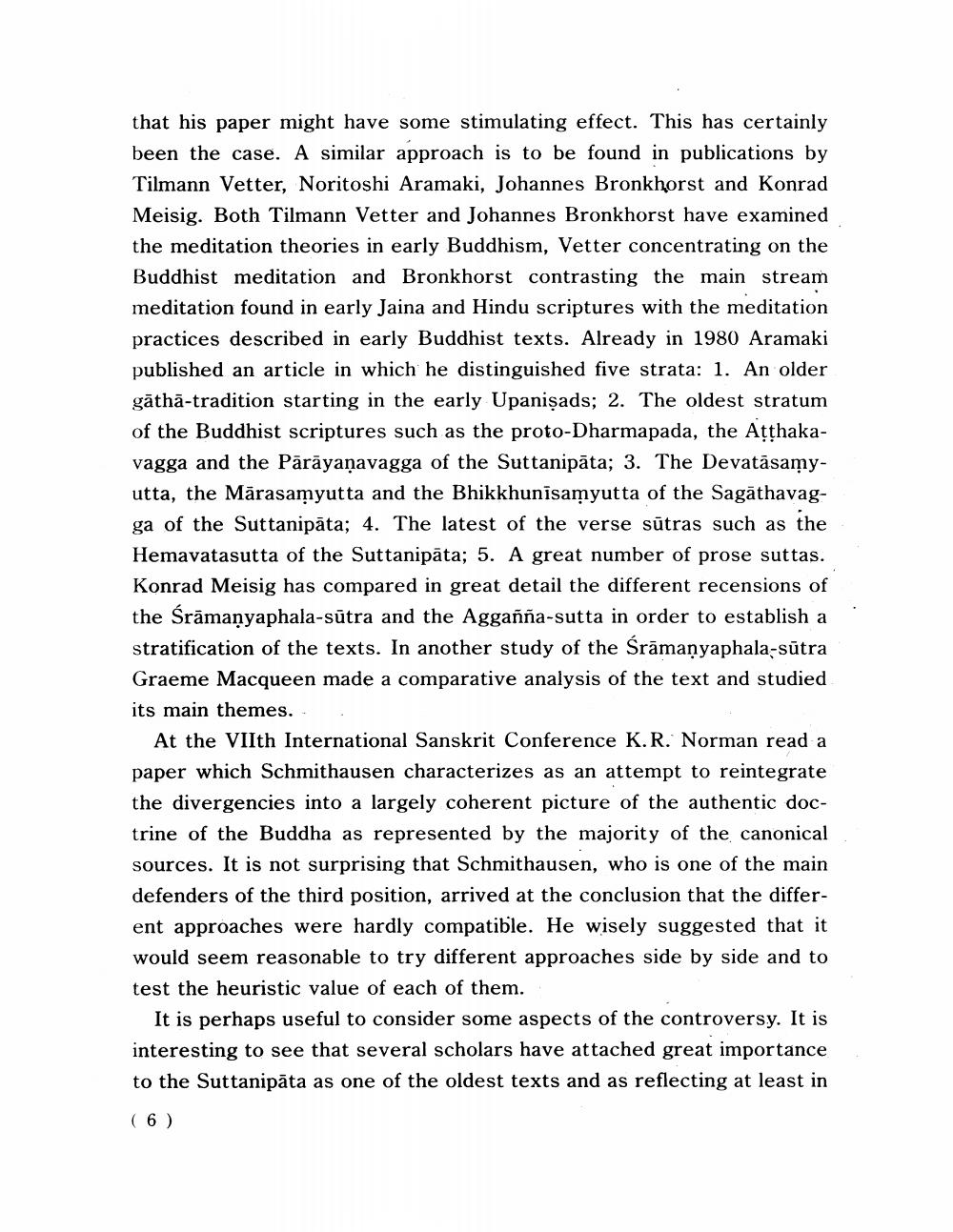________________
that his paper might have some stimulating effect. This has certainly been the case. A similar approach is to be found in publications by Tilmann Vetter, Noritoshi Aramaki, Johannes Bronkhorst and Konrad Meisig. Both Tilmann Vetter and Johannes Bronkhorst have examined the meditation theories in early Buddhism, Vetter concentrating on the Buddhist meditation and Bronkhorst contrasting the main stream meditation found in early Jaina and Hindu scriptures with the meditation practices described in early Buddhist texts. Already in 1980 Aramaki published an article in which he distinguished five strata: 1. An older gāthā-tradition starting in the early Upanişads; 2. The oldest stratum of the Buddhist scriptures such as the proto-Dharmapada, the Atthakavagga and the Pārāyaṇavagga of the Suttanipāta; 3. The Devatāsamyutta, the Mārasamyutta and the Bhikkhunisamyutta of the Sagāthavagga of the Suttanipāta; 4. The latest of the verse sūtras such as the Hemavatasutta of the Suttanipāta; 5. A great number of prose suttas. Konrad Meisig has compared in great detail the different recensions of the Śrāmanyaphala-sūtra and the Aggañña-sutta in order to establish a stratification of the texts. In another study of the Srāmanyaphala-sūtra Graeme Macqueen made a comparative analysis of the text and studied its main themes.
At the VIIth International Sanskrit Conference K.R. Norman read a paper which Schmithausen characterizes as an attempt to reintegrate the divergencies into a largely coherent picture of the authentic doctrine of the Buddha as represented by the majority of the canonical sources. It is not surprising that Schmithausen, who is one of the main defenders of the third position, arrived at the conclusion that the different approaches were hardly compatible. He wisely suggested that it would seem reasonable to try different approaches side by side and to test the heuristic value of each of them.
It is perhaps useful to consider some aspects of the controversy. It is interesting to see that several scholars have attached great importance to the Suttanipāta as one of the oldest texts and as reflecting at least in
( 6 )




